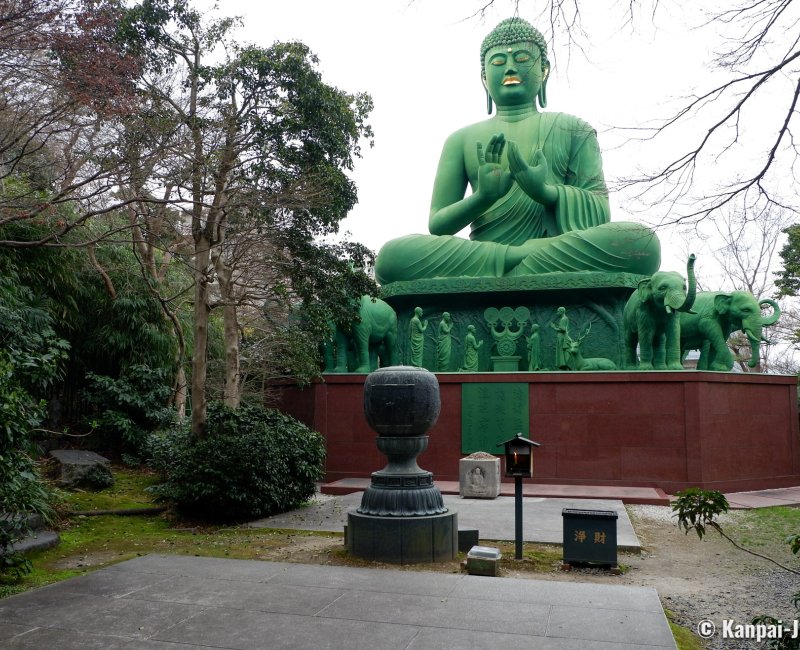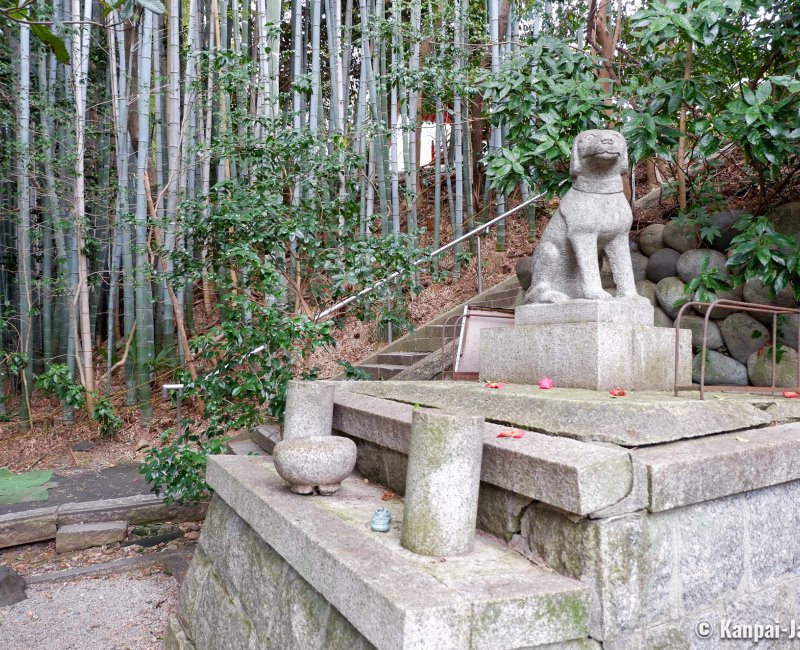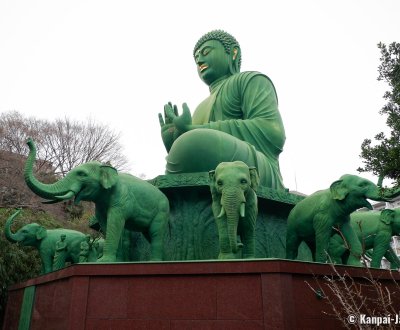Togan-ji
Nagoya Great Green Buddha
Togan-ji is a Buddhist temple home to Nagoya’s Great Buddha Daibutsu statue in Japan. Located in the east of the city center, it was built in the 16th century in memory of local lord Oda Nobuhide. While the site seems to be somehow forsaken today, it offers a short and unusual spiritual walk, in the heart of a very quiet residential neighborhood.
Whether entering its grounds by its main white and red gate, with round edges of Chinese inspiration, or by its back where sits the great green Buddha of Nagoya, Togan-ji temple seems like an off-limits place nowadays. Indeed, the spiritual enclosure is hidden in a quiet residential neighborhood of the east of the city, and gives the impression of lacking maintenance, as per the giant bamboos sprouting around a rather messy garden where Buddhist sculptures and construction equipment are lying around (there were even plastic toilets 🚽 when we visited). Getting over the initial surprise, let’s explore this unusual small temple that mixes genres and times.

Built in 1987, the Nagoya Daibutsu is a large statue of Shaka Nyorai, the original Buddha. Placed on a 5-meters high pedestal, it is 10 meters high and made of bronze. It was painted in a vivid green, except for the eyelids, lips and ears that were gilded. The base of the statue is ornamented with about 10 elephant statues, instead of the traditional lotus flowers, that remind of Hinduism iconography. The place is indeed strongly connected to India, especially as one of its head priests studied there.
Togan-ji temple is affiliated to the Soto sect of Zen Buddhism in Japan, and its main deity is Kannon Bosatsu (deity of compassion and mercy) and more precisely Sho Kannon (or Kanzeon Bosatsu) referring to the deity’s human appearance, that is to say pictured with only one face and 2 arms. The main pavilion is the place of worship of the guardian deity Benzaiten (Benten or Sarasvati in Sanskrit). A rare image of Benten, a "Sleeping Benten", can be admired there a few days per year. Lastly, the temple is known to be home to the largest mokugyo in Japan, which is 1 meter diameter. A mokugyo is a traditional percussion instrument, shaped as a large fish, that Buddhist monks hit in rhythm for Sutra chanting.

Family temple to honor Oda Nobuhide
The origins of Togan-ji date back to its founding during the Tenbun era (1532 - 1555) by Oda Nobuyuki (1536 – 1557) to honor the memory of his father Oda Nobuhide (1510 – 1551). The temple was thus designated after Nobuhide’s posthumous Buddhist name: "Togan Domi Daizenjomon". In 1714, Togan-ji was moved to its current location, in the heart of Chikusa ward in the east of Nagoya.
A younger brother of notorious Oda Nobunaga (1534 - 1582), Nobuyuki ruled over Suemori Castle 🏯, in the former Owari province (west of the current Aichi prefecture), before being murdered by Nobunaga for trying to plot against him.
Nobuhide’s grave can be found in the cemetery, where a large area is also dedicated to pets, and statues of cats 🐈 and dogs sometimes decorated with freshly cut flowers. While the temple may seem forsaken, Togan-ji still has its fair share of visitors, mainly following its seasonal celebration calendar.

